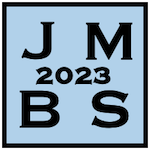Myxococcus xanthus, a social bacterium, exhibits intriguing collective behavior, characterized by coordinated group movement and the ability to reverse their body axis and changing their direction. This behavior results in the formation of interesting patterns, such as rippling, where cells produce counter-propagating waves. The complex nature of this behavior has captured the attention of biologists, physicists, and mathematicians, driving extensive research efforts.
The aim of this talk is two-fold. Firstly, we introduce new biological data pertaining to Myxococcus xanthus bacteria, featuring high-resolution movies of their collective movements. We use recently developed algorithms for movie segmentation, trajectory tracking, and the analysis of bacterial reversals. Building on these results, we use kinetic modeling to propose a new hypothesis pertaining to the relationship between bacterial crowding and their reversal behavior.
To better understand the complex dynamics of these bacteria, we develop a 2D agent-based model, where bacterial congestion plays a crucial role in influencing body axis reversals. We validate this model using our biological data and show that it faithfully replicates the dynamics of rippling and swarming. Finally, our model reveals the critical role of background anisotropy in both the generation and persistence of swarming and rippling patterns.

 PDF version
PDF version
